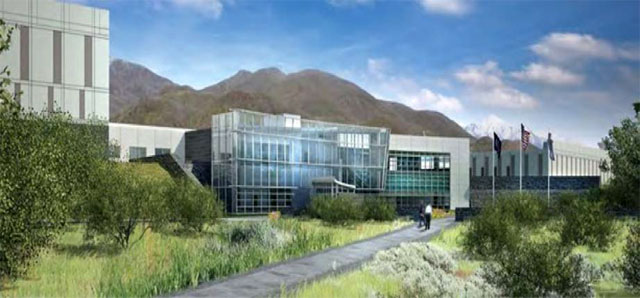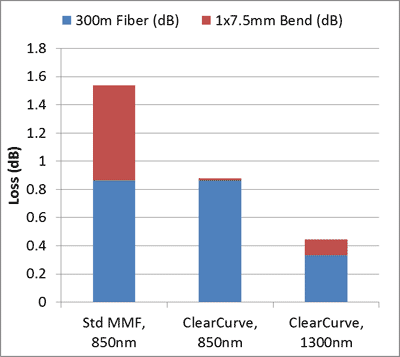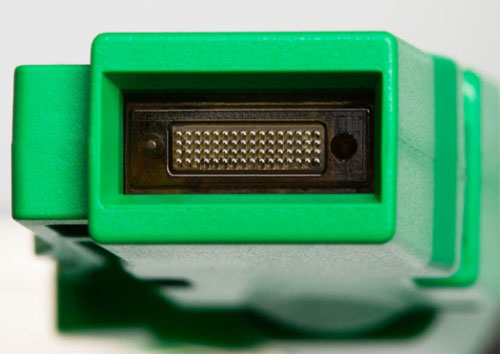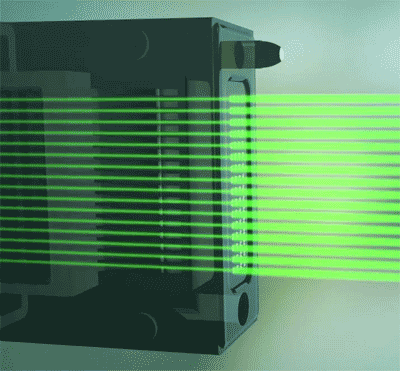Optics for data centers. New trends

Copper, as a signal transmission medium, is increasingly being driven out of modern data centers - its characteristics completely do not meet the requirements of today. Optical technologies are replacing copper technologies, but only those that can meet the specific needs of data centers take root. Get to know the latest news from the forefront of the struggle for data (or with data - how to watch). In this post: the long-wave multimode, silicon photonics, lens connectors, as well as something about bending optical patch cords.
So, the copper lines are doomed. They consume too much energy, too slow and massive. Copper, of course, is still appropriate for an office or home LAN, but it no longer belongs to the data center. There even the locality is now different, not “copper”. Let's look at the sizes of the data centers being put into operation now. Switch SuperNap in Las Vegas - an area of almost 200 thousand square meters; DC NSA in Utah - 100 thousand square meters. m. Such premises in football fields just right to measure, and not in meters. And all these fields are penetrated by traffic flows that are carried along communication lines - naturally, optical.

National Security Agency data center, built in 2013
Historically, cost-effective multimode optics have been used in the data center, but with the growth of their size and its capabilities it has become lacking. Losses in a multimode fiber at a traditional wavelength of 850 nm are too large to solve the problem using half measures. The transition to 1310 nm is seen as the optimal solution - such light is less scattered both in the optical cable and in the silicon modules of the network adapters actively being developed at Intel now.

By switching to 1310 nm, we triple the range of multimode optics. Naturally, any cable will not work here. And not everyone will do - for example, one that Corning produces. The core shape of its Corning ClearCurve cable is optimized for a 1310 nm beam (at the same time, it has a standard diameter of 50 μm and is compatible with 850 nm). In addition, ClearCurve has another interesting feature. It is known that optical cables are sensitive to bending of a small radius: “breaking” the line can easily bring it out of operation. So, the ClearCurve cable is 10 times less sensitive to bending, which is very valuable in tight data wiring in data centers.

Attenuation in a standard multimode cable and Corning ClearCurve cable
Intel and Corning jointly tested the capabilities of 1310 MMF technology using Intel Silicon Photonics silicon network adapters and a ClearCurve cable. Experience has shown that with a cable length of 300 m, the attenuation was only 1 dB, taking into account the connectors. For the needs of the data center, such characteristics are quite enough.

Microscope optical cable slice
Speaking of connectors. Having dealt with optics, you probably know that the final connectors are one of the main weak points of the optical line. The quality of the cutting, the strength of the pressure, the cleanliness of the contact - all this greatly affects the performance of the cable system, which, of course, worries the engineers of the data centers - there are enough wires in their household, and there are twice as many ends. Is it possible to fundamentally increase the reliability of optical connections? The answer is yes - for example, using the MHS connector.

MHS connector
The main difference between the MHS from other connectors is that a collimation lens is put on the end of the conductor, expanding the light beam from 50 microns to 180. The beam expansion sharply reduces the sensitivity of the compound to any adverse factors: geometric mismatch of the ends, grinding errors, ingress of foreign particles, and so on. Further. Naturally, this decreases attenuation on the connector and back reflection. However, this is not all.

Collimation of rays in the MHS connector
Increased permissible “negligence” when connecting the cables made it possible to place several lines at once, not 2 and not 10, but immediately 64. It is easy to calculate, for example, that at 25 Gbit / s per line, the total bandwidth the beam will be 1.6 Tb / s - enough to move even the Biggest Data.
And finally, the promised information on Intel's developments in silicon photonics. Better to see once than hear a hundred times: Watch a 5-minute video that includes Justin Rattner’s performance at this year’s IDF and a short film demonstrating Intel’s 100-gigabit silicon adapter.
